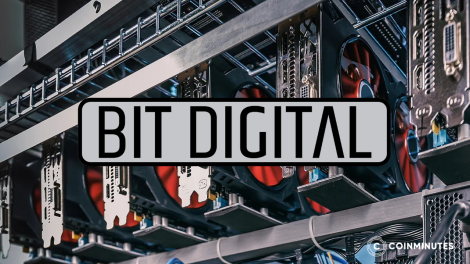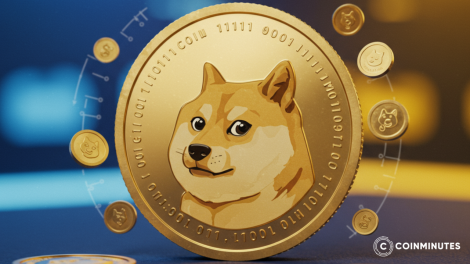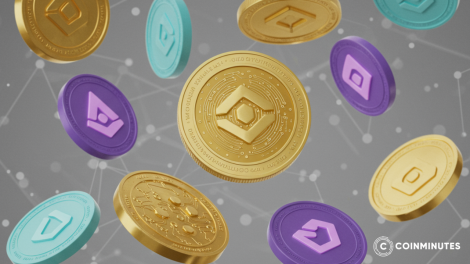What is Stablecoin? Understanding the Definition, How It Works And Its Different Types

The crypto market is a loud place. Prices shoot up to absurd highs and crash down to sickening lows. Fortunes are made and lost in the blink of an eye. It’s a relentless, churning sea of volatility. But in the middle of all that chaos, some people tried to build a place to anchor down when the waves get too high. They call it a stablecoin. But what is it exactly? Our team at CoinMinutes will have the answer to that question in this article.
What is a Stablecoin?
A stablecoin is a cryptocurrency designed to have a stable price. It achieves this by pegging its market value to an external reference. Most of the time, that reference is a major fiat currency, like the U.S. dollar. The whole point is to create a token that is always worth, for example, exactly one dollar. So, 1 USDC should always equal $1.00. 1 USDT should always equal $1.00.
This makes them a bridge between the old world of traditional finance (TradFi) and the new, chaotic world of crypto. They offer the technological benefits of a cryptocurrency—the ability to be sent anywhere in the world, 24/7, quickly and cheaply, without needing a bank—but they strip away the gut-wrenching volatility that makes something like Bitcoin impractical for everyday payments.
You can think of a stablecoin as a digital representation of a dollar, a euro, or some other asset, that lives on a blockchain. This stability makes them incredibly useful within the crypto ecosystem. Traders use them as a "safe haven" to park their funds during market downturns without having to cash out to a real bank account. They are the fundamental unit of account and medium of exchange in the world of Decentralized Finance (DeFi), used for everything from lending and borrowing to providing liquidity on exchanges.
The volume of stablecoin transactions has become a key metric for measuring activity in the digital asset economy, a figure that dashboards from companies like Visa are now tracking. But don't let the name fool you. Keeping that peg, maintaining that "stability," is a constant, difficult battle, and not all of them succeed.
How Do Stablecoins Work?
So how do these things stay "stable"? It's not magic. A stablecoin doesn't just hold its value because it says it will. It needs a mechanism, a set of rules and reserves that convinces the market that it’s actually worth its pegged value. If people lose faith in the mechanism, the peg breaks, and the whole thing can come crashing down.
The core principle is maintaining a reserve of assets that backs the value of the stablecoins in circulation. The nature of that reserve is what defines the different types of stablecoins. The issuer of the stablecoin must be able to handle redemptions—if you have 100 dollar-pegged stablecoins, you should be able to go to the issuer and redeem them for 100 real U.S. dollars. This promise of redeemability is what anchors the price.
Arbitrage traders also play a key role in maintaining the peg.
-
If the stablecoin price drops below $1 (e.g., to $0.99), arbitrageurs will buy up large amounts of the cheap stablecoin on the open market and redeem them with the issuer for $1, making a small profit on each coin. This buying pressure helps push the price back up to $1.
-
If the stablecoin price rises above $1 (e.g., to $1.01), arbitrageurs will go to the issuer, create new stablecoins for $1 each, and sell them on the open market for $1.01. This selling pressure helps push the price back down to $1.
This market mechanism works as long as everyone trusts that the backing is solid and that redemptions will be honored. The "how" of that backing is what separates the different types of stablecoins.
Types of Stablecoins
There isn’t just one way to build this island of stability. Engineers have tried several different models. Each comes with its own set of trade-offs and risks. Tracking these different financial experiments is a constant effort for observers like the team at CoinMinutes.
Fiat-Backed Stablecoins
This is the simplest and most popular model. For every stablecoin issued, a centralized company holds an equivalent amount of fiat currency—like U.S. dollars—in a bank account. Tether (USDT) and USD Coin (USDC) are the two giants in this space. They account for the vast majority of stablecoin trading volume.

The system tries to maintain its peg by automatically increasing the supply when the price is above the peg and decreasing it when the price is below. This c an involve a two-token system, where one is the stablecoin and the other is a token meant to absorb volatility.
This model requires you to trust the central issuer. You have to trust that they have the reserves they claim to have and will honor redemptions. To build this trust, reputable issuers undergo regular audits and publish "attestations" of their reserves.
Crypto-Backed Stablecoins
These stablecoins are backed not by dollars in a bank, but by other cryptocurrencies held in smart contracts. Dai (DAI) is the most prominent crypto-backed stablecoin. It is managed by a decentralized autonomous organization (DAO) called MakerDAO.
To create these stablecoins, a user must lock up another cryptocurrency (like Ether) as collateral. Because the collateral itself is volatile, these systems require over-collateralization. For example, you might have to lock up $150 worth of Ether to mint $100 worth of a stablecoin. This extra cushion is designed to absorb price drops in the collateral.
If the price of the underlying crypto collateral crashes too quickly, it can trigger a wave of liquidations that causes the stablecoin to lose its peg. It’s a more complex and fragile balancing act.
Algorithmic Stablecoins
This is the most ambitious—and most dangerous—category. Algorithmic stablecoins are not backed by any collateral at all. Instead, they use complex algorithms and smart contracts to manage the token's supply, automatically buying and selling the stablecoin on the open market to keep its price at $1. The most infamous example was TerraUSD (UST).
If the price is above $1, the algorithm mints more tokens to increase supply and drive the price down. If the price is below $1, the algorithm buys tokens off the market to reduce supply and drive the price up.
Algorithmic stablecoins are extremely fragile and depend entirely on market confidence. When that confidence is lost, they can enter a "death spiral." The collapse of UST in May 2022 wiped out over $40 billion in value and showed the world just how fast these systems can fail. Most observers now view this model with extreme skepticism.
Commodity-Backed Stablecoins
These are stablecoins backed by physical commodities, most commonly gold. Pax Gold (PAXG) is a token where each one is backed by one troy ounce of gold held in a London vault.
Similar to fiat-backed coins, an issuer holds a certain amount of a commodity, like gold bars in a vault, and issues a token that represents a claim on that commodity.
These stablecoins face the same as fiat-backed coins—counterparty risk. You are trusting the issuer to actually have the gold and to store it securely.
Pros and Cons of Using Stablecoins
Stablecoins are a vital piece of the crypto plumbing. They are incredibly useful, but they also come with a whole host of risks that are often overlooked. They promise stability, but sometimes they deliver a nasty surprise.
Benefits of Stablecoins
-
A Haven from Volatility: This is their primary purpose. In a market where prices can fall 20% in an hour, stablecoins offer a place for traders and investors to park their capital without exiting the crypto ecosystem entirely. You can sell your Bitcoin for USDC and wait out the storm, then buy back in later, all without ever touching a traditional bank account.
-
Facilitating Trading: They are the base currency for most crypto trading. A huge number of trading pairs on exchanges are priced in stablecoins (e.g., BTC/USDT, ETH/USDC). They provide a stable unit of account that makes pricing and trading much simpler than pairing every coin against every other coin.
-
Powering DeFi and dApps: The world of Decentralized Finance would be almost impossible without stablecoins. They are the primary asset used for lending, borrowing, and yield farming. You deposit stablecoins to earn interest; you borrow stablecoins against your crypto collateral. They provide the liquidity and stability needed to build a functional financial system on-chain.
-
Fast, Cheap, Global Payments: For international remittances or business payments, stablecoins can be a powerful tool. Sending USDC to anywhere on the globe can be settled in minutes and only costs a fraction of that of a traditional wire transfer. The system also operates 24/7. This potential is a key reason why major payment networks like Visa are exploring their use.

Drawbacks and Risks of Stablecoins
-
De-Peg Risk: If a stablecoin fails to maintain its peg, it's a huge problem. This can happen for many reasons. For a fiat-backed coin, it could be a crisis of confidence in its reserves. For an algorithmic coin, the algorithm could fail during a panic. When a stablecoin "de-pegs," it can trade significantly below its $1 target, leading to large losses for those holding it.
-
Counterparty and Centralization Risk: For fiat-backed stablecoins like USDT and USDC, you are trusting the central companies (Tether and Circle) that issue them. You trust that they have the reserves they claim and that they won't be shut down or have their bank accounts frozen by regulators. This is a significant element of centralization and trust in a supposedly "trustless" ecosystem.
-
Regulatory Risk: Stablecoins are getting a lot of attention from regulators around the world, and not in a good way. Governments are concerned about the fact that stablecoins might mess with the stability of the regular financial system, and they can be used for money laundering. The possibility of harsh new rules could seriously hurt the utility and value of stablecoins. Future regulations might force stablecoin companies to become actual banks and limit the use of stablecoins.
-
Transparency Issues: There's a lot of debate about whether stablecoin companies actually have the money they claim to back their coins. The big question is: do these companies have $1 in the bank for every $1 stablecoin they create? Some people doubt it. Companies don't always clearly show what assets they're holding, and the audits aren't consistent or detailed enough. Sometimes the "backing" includes risky investments instead of just cash. This lack of transparency creates uncertainty.
-
Smart Contract and Algorithmic Risk: For stablecoins like DAI, the smart contracts that run them might have bugs or coding errors. If hackers find these bugs, they could exploit them and cause problems. For algorithmic stablecoins, they rely on complex economic models to keep their price stable. If those models are flawed or break under pressure, the stablecoin can completely lose its value.
The Future of Stablecoins
The role of stablecoins is growing. They have moved from a niche crypto-trading tool to a major component of the digital economy.
-
Payments: Major payment companies are integrating stablecoins into their networks. This points to a future where they are used for everyday commerce.
-
Regulation: The future will be shaped by government regulation. Clear rules could bring more legitimacy and safety to the space. They could also stifle innovation. The conversation is happening now in capitals around the world.
-
Central Bank Digital Currencies (CBDCs): Governments are exploring their own digital currencies. A digital dollar issued by the Federal Reserve would be a direct competitor to private stablecoins. The relationship between CBDCs and stablecoins will be a major story in the coming years.

Stablecoins are at a crossroads. They have proven their usefulness within the crypto world. Their next test is to find a secure and regulated place in the broader financial system. The team at CoinMinutes continues to monitor this space. The developments here will have a huge impact on the entire digital asset industry.
The Bottom Line
A stablecoin is a promise. A promise of stability in an unstable world. That promise is held together by different things—dollars in a bank, code in a smart contract, or sometimes, just pure belief. It’s a useful, powerful tool. It’s also a point of systemic risk.
When they work, they are the quiet, boring plumbing that makes everything else in crypto possible. When they fail, they fail spectacularly, taking billions of dollars with them. They are an attempt to tame the beast of volatility. But sometimes, the beast gets loose.
 English
English
 Vietnamese
Vietnamese
















